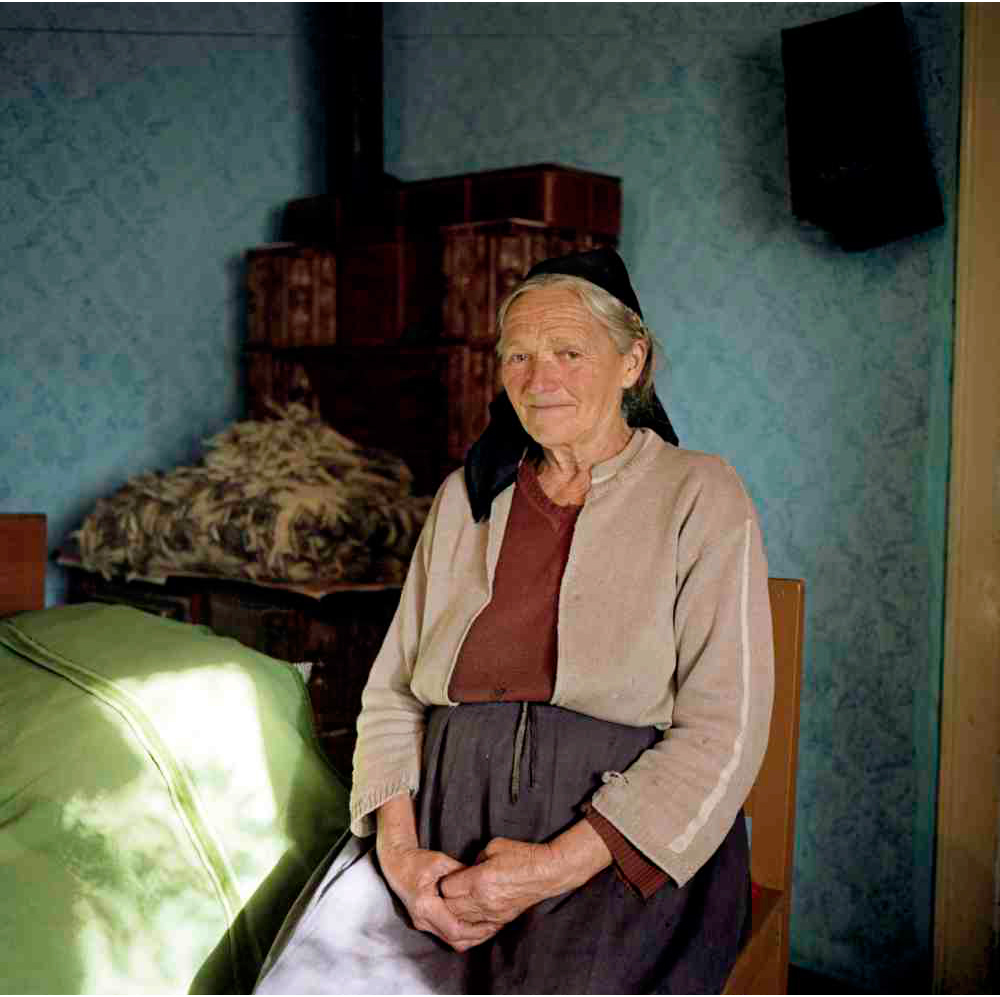
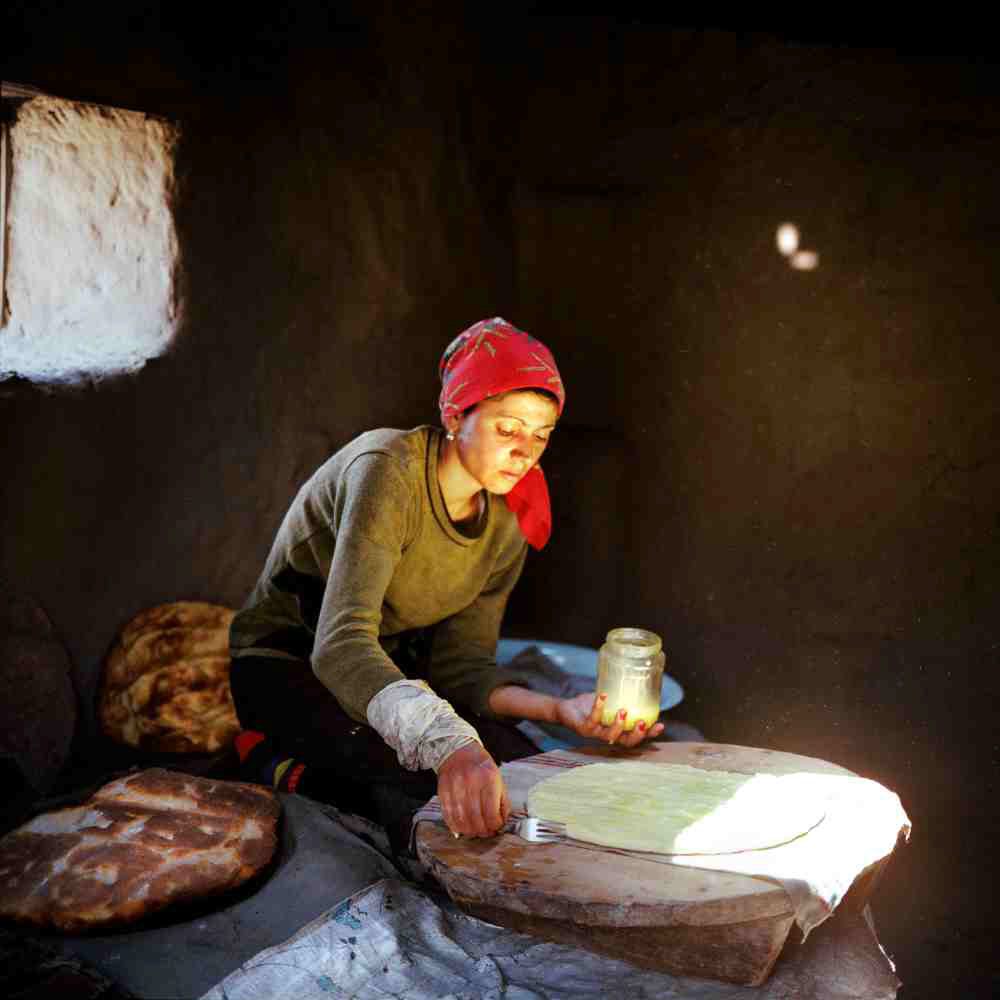
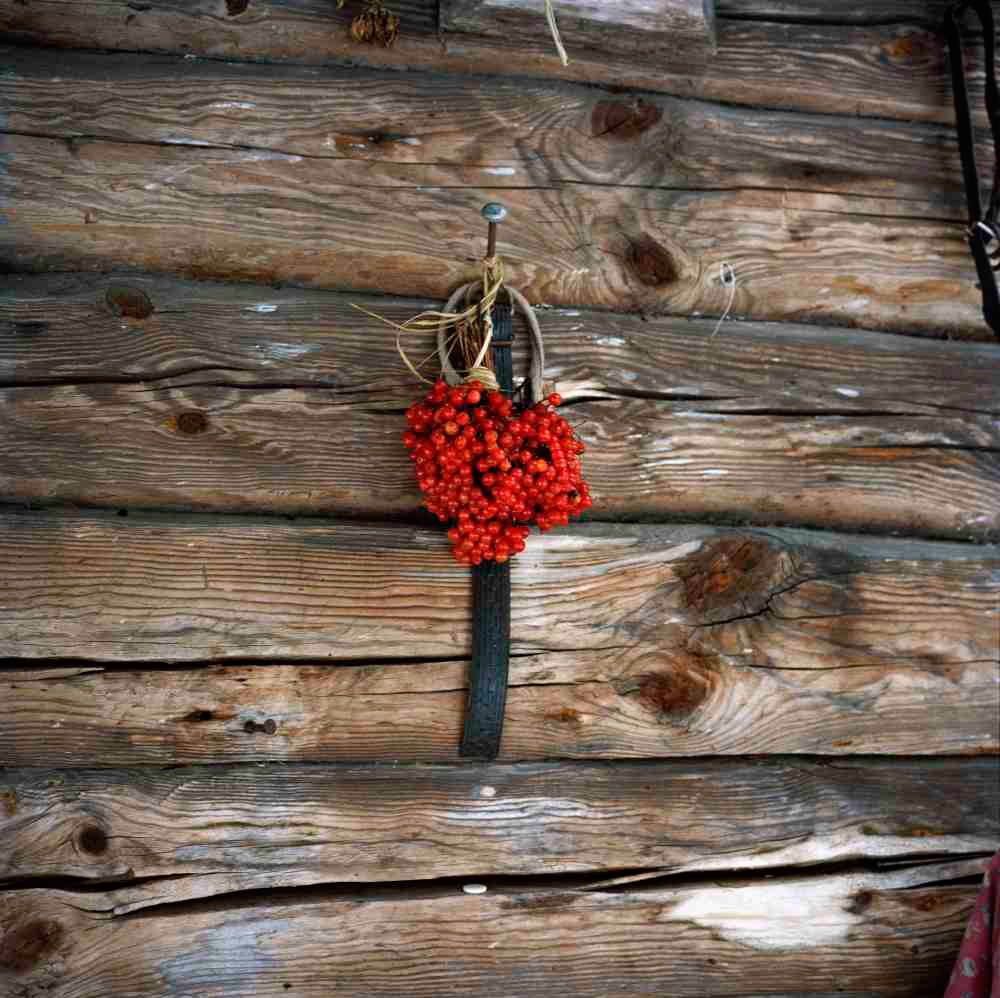
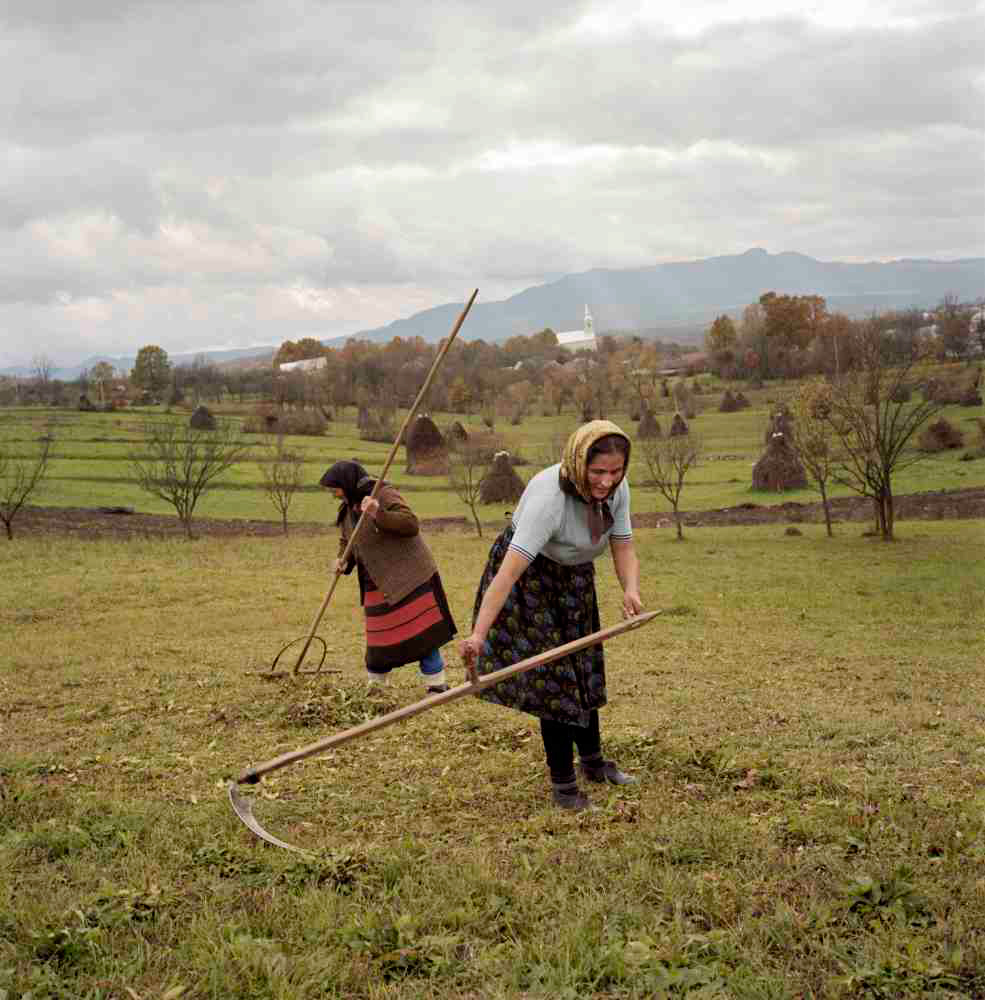
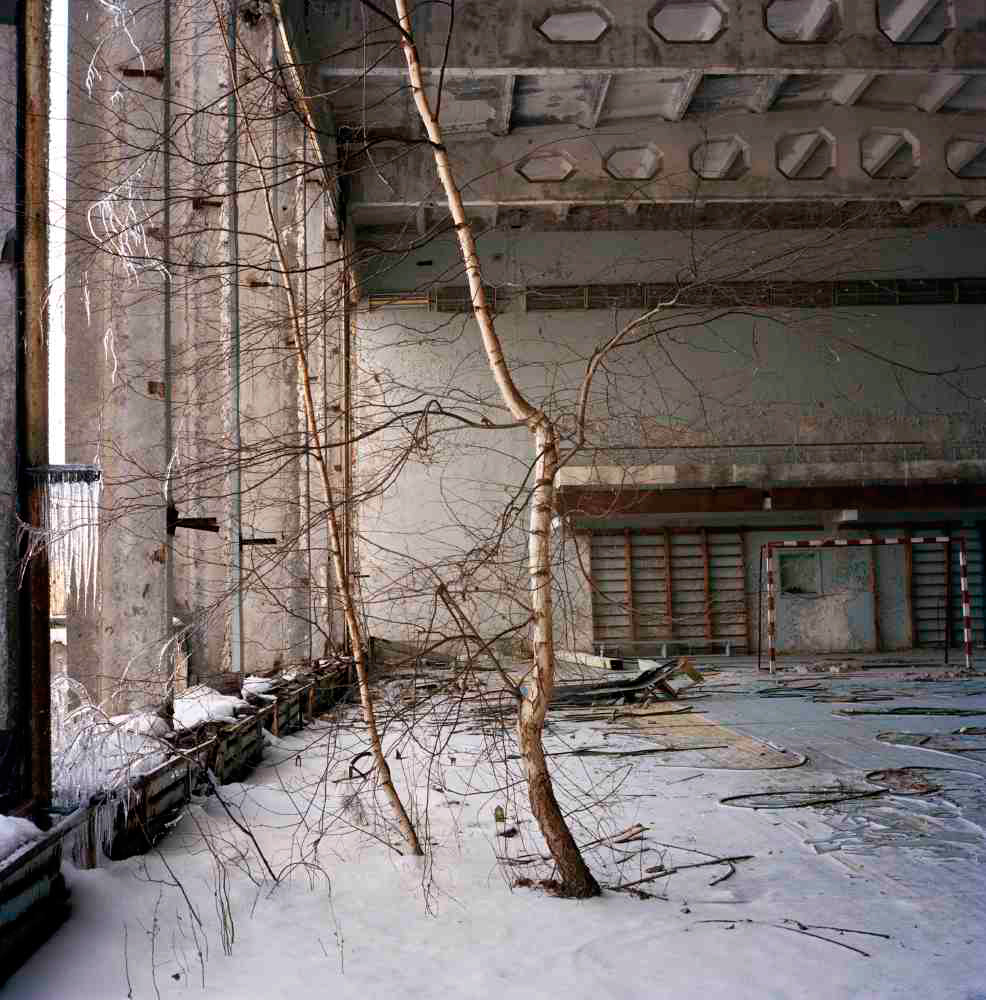
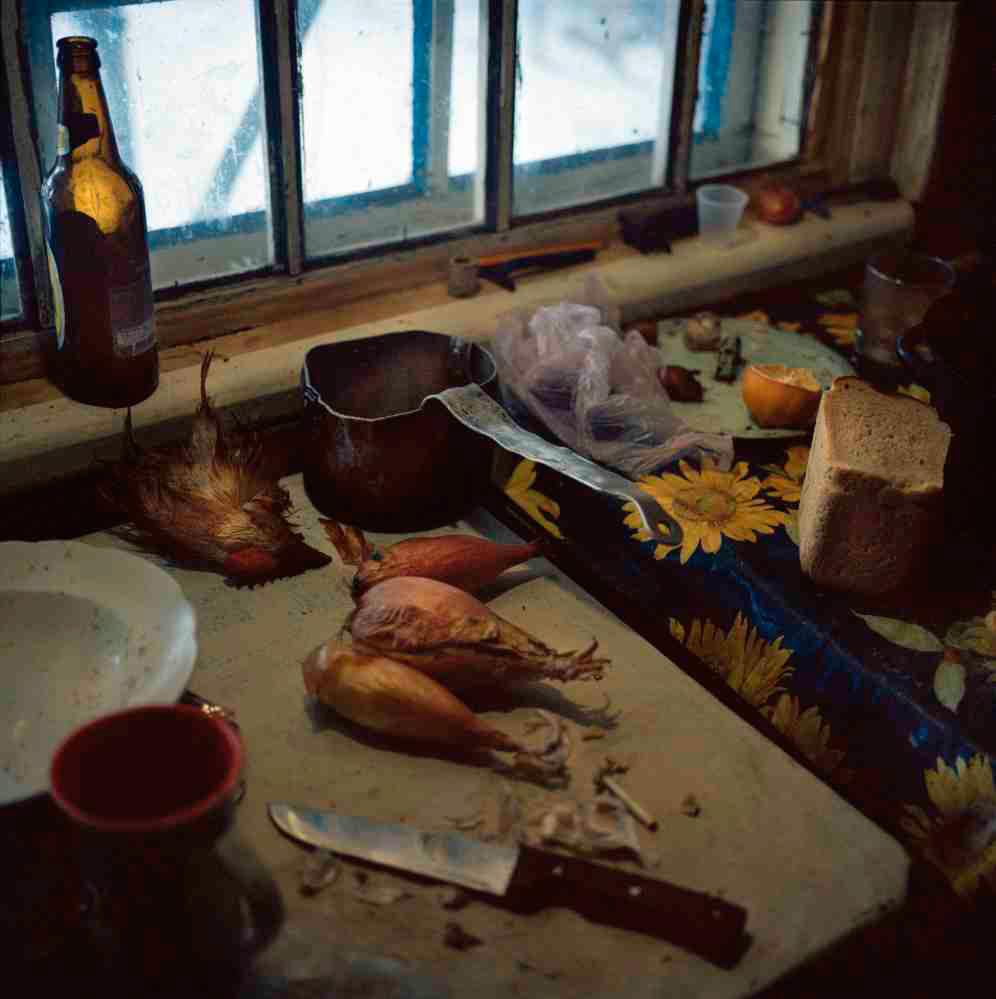
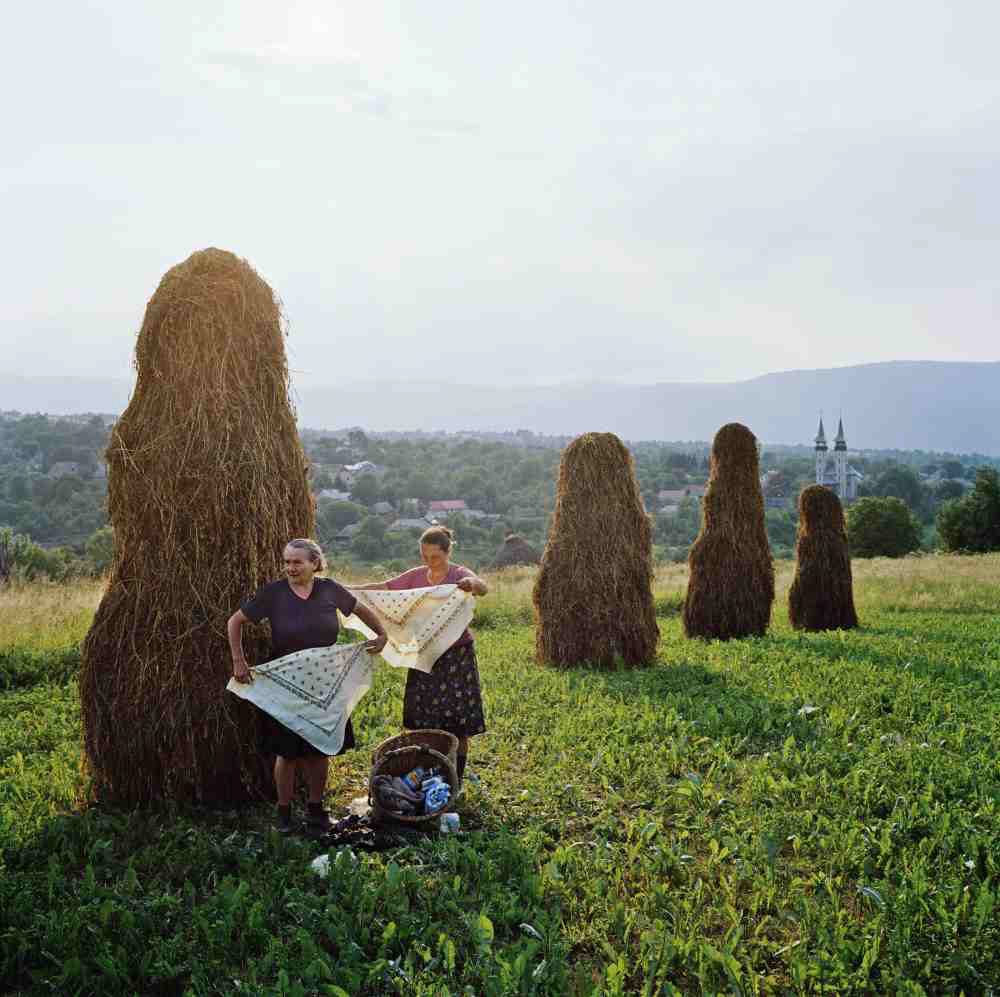
WAITING FOR WINTER
….Rena Effendi
a cura di Anna Arutiunova
15 September - 30 October, 2015
10b Photography in collaborazione con ILEX Gallery
“L’anima del villaggio aleggia accanto a noi,come un timido profumo d’erba falciata,o spiovere di fumo da gronde di paglia,o danza di capretti su alte tombe”.
L’anima del villaggio di Lucian Blaga
“Ho visto una donna seduta sulla veranda di casa. Le ho chiesto “Che cosa fai?”, e lei: “Niente, aspetto l’inverno”.
Rena Effendi
I campi d’erba alta sono stati falciati, gli ultimi covoni di fieno si stanno asciugando sotto il sole d’autunno. Una donna siede quasi immobile in una stanza, nella casa di un villaggio in Transilvania, le mani poggiate sopra alle gambe. Giorno dopo giorno aspetta, come se l’inverno possa d’un tratto comparire nel cortile vicino ed entrarle in casa. E’ l’inverno che chiude l’anno e porta a conclusione un nuovo cerchio della vita.
Questo cerchio resta sempre lo stesso per gli abitanti della Transilvania, persone le cui vite sono profondamente intrecciate ai cicli della natura e che dipendono dall’andamento della mietitura. Eseguono i compiti indispensabili del mietere e del coltivare con tranquillità e rispetto. La ripetitività del loro mestiere trascende la noia e si dipana lungo un ritmo lento d’esistenza.
Rena Effendi è nota per essere un’acuta osservatrice dell’intima connessione che esiste tra le persone, le loro abitazioni e gli spazi che le legano alla propria storia e tradizioni. Il più delle volte si concentra sui luoghi in cui questo fragile legame è sul punto di rottura. Le sue fotografie, capaci di trasmettere calma ma anche di scuotere, ci ricordano del continuo scontro tra modernità e tradizione. La mostra Waiting for Winter, raccoglie opere provenienti da tre serie fotografiche di grande successo - Built on Grass (2014), Chernobyl: Still Life in the Zone (2010) e Khainaliq Village (2006). Tutte e tre sono cariche di fascinazione per la vita di paese e la sua lentezza, ma allo stesso tempo scardinano lo stereotipo della tranquillità del mondo contadino, mettendo in risalto i segni della fatica, l’avversità dell’ambiente e le difficoltà della vita quotidiana. Ogni serie rivela il compromesso tra un forte attaccamento alla propria terra d'origine e la difficoltà di mantenere lo stile di vita familiare. Nella serie inedita Built on Grass, è ritratto un villaggio quasi pastorale incastonato tra i paesaggi bucolici della Romania. Uomini e donne lavorano i loro preziosi campi di fieno in maniera quasi medievale, a mano, preferendo il cavallo al trattore. Qualcosa di simile accade anche in Khainaliq Village in Azerbaijan, dove una piccola comunità di allevatori di pecore vive tra spettacolari montagne. Le montagne non sono solo belle, ma anche difficilmente raggiungibili, così la popolazione è costretta a fare a meno di acqua corrente e gas.
Nella parte ucraina vicina a Chernobyl molti villaggi sono finiti nella zona di esclusione, ma gli abitanti si sono rifiutati di andarsene. Nell serie Chernobyl: Still Life in the Zone la calma apparente del villaggio si è trasformata nel silenzio mortale della natura, che lentamente riconquista i territori devastati dagli uomini, e si vendica maturando raccolti avvelenati.
Nonostante la miseria della vita contadina, tutte e tre le serie sono pervase di quiete. E' in parte merito dell'uso pittorico della luce, che dona alle fotografie l’aspetto delle tele dei vecchi maestri fiamminghi. La luce che inonda gli interni dei quadri di Vermeer avvolgendo i volti in un bagliore dorato o i paesaggi delicatamente illuminati di Brueghel, dove contadini lavorano i campi, sembrano essere per Rena una fonte d'ispirazione tanto quanto la vita reale. Tuttavia, non è solo la poesia del paesaggio rurale a modellare la quiete di queste immagini. Rena riesce infatti a cogliere l’aspetto più complesso che caratterizza la vita contadina – il lavoro interiore che le persone devono affrontare per raggiungere uno stato mentale pacifico. I loro volti pieni di dignità sono testimoni del delicato equilibrio raggiunto tra necessità e gioia. La loro umiltà è maturità e c’è davvero qualcosa di sublime in queste vite, che con pazienza attendono l’inverno.
..Photographs by Rena Effendi
Curated by Anna Arutiunova
September 15 - October 30, 2015
10b Photography in collaboration with ILEX Gallery
“The soul of the village hovers next to us, like a timid scent of mown grass, or the spill of smoke from straw eaves, or dance of kids on high tombs”.
The soul of the village of Lucian Blaga "
I saw a woman sitting on the porch of her house. So I asked her "What are you doing?" to which she responded: “Nothing, just waiting for winter".
Rena Effendi
The high grass fields have been mown, the last haystacks are drying under the autumn sun. A woman sits almost motionless in a room, in a village house in Transylvania, her hands resting on her legs. Day after day he waits, as if winter could suddenly appear in the nearby courtyard and enter the house. It is the winter that closes the year and brings to a conclusion a new circle of life. This circle always remains the same for the inhabitants of Transylvania, people whose lives are deeply intertwined with the cycles of nature and which depend on the course of the harvest.
They perform the indispensable tasks of reaping and cultivating with tranquility and respect. The repetitiveness of their craft transcends boredom and unravels along a slow rhythm of existence. Rena Effendi is known for her keen observation of people’s intimate connection to their homes and to spaces that link them to their history and traditions. Mostly focusing on places where this fragile bond is on the verge of breaking up. Her photographs, both peaceful and awakening, work as reminders of continuing clash between modernity and tradition. The exhibition Waiting for Winter, brings together works from three photographic series that brought Rena Effendi many awards – Built on Grass (2014), Chernobyl: Still Life in the Zone (2010) and Khainaliq Village (2006). All three radiate with admiration for the slow village life, but at the same time disrupt its peaceful image, bringing attention to traces of toil, unfavourable environment and daily life hardships. Each series unveils a compromise between a strong attachment to one’s homeland and the difficulties of maintaining the familiar way of life. Seen here in its international debut, in Built on Grass we see an almost pastoral village set amongst the bucolic landscapes of Romania. Men and women labour their land of precious hay meadows in an almost medieval way, by hand, preferring horse to tractor. Very much like in the Khainaliq Village in Azerbaijan, where a small community of sheepbreeders live among spectacular mountains. The mountains are not only beautiful, but also hardly reachable so people have to go without running water and gas. In the Ukrainian Chernobyl area, many villages have been encompassed into the exclusion zone, but the inhabitants refused to leave. Here the seeming calm of the village in Chernobyl: Still Life in the Zone has become a deadly silence of nature, which slowly reclaims the territories spoiled by men and revenge and produces a harvest of poisoned vegetation.
Notwithstanding the seamy side of village life, all three series are pervaded with tranquility. It is in part the merit of Rena Effendi’s painterly use of light, which gives the photographs the look of canvases from the Dutch old masters. The sunlight that floods the interiors of Vermeer’s paintings and casts a face with a golden glow or Brueghel’s mildly lit landscapes with peasants working in the fields seem to be as much of an inspiration for Rena Effendi as real life. However, it is not just the poetry of the rural landscape that shapes the stillness of these images. Rena manages to capture the most complex aspect that characterizes peasant life - the inner work that people have to face to reach a peaceful state of mind. Their dignified faces bear witness to the delicate balance achieved between necessity and joy. Their humility is maturity and there is indeed something sublime in these lives, which patiently await winter…..
